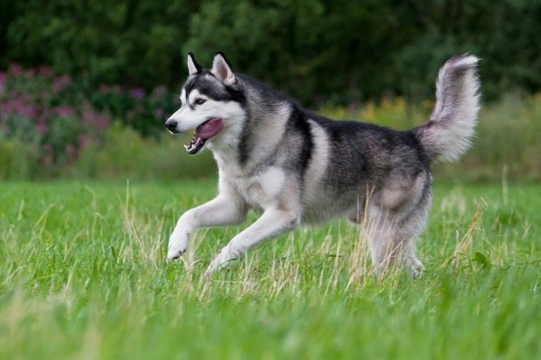
Learning more about the Inuit dog breeds
The term “Inuit” refers to the indigenous people of the Arctic regions of Canada, all of whom have a long history of relying upon their sled dogs and working dogs to help them to navigate and survive within these cold, harsh regions. While in many countries, the use of working dogs has died out to a great extent as our technology has improved and dogs have become more popular as companions than colleagues, the Inuit region maintains a strong tradition of working dog usage up until the present day. Throughout the year, the Inuit people use dogs for hunting, guarding, defence, and to pull sleds. As the Inuit people themselves have evolved and fine-tuned the needs and requirements of their canine companions, several individual dog breeds have become established within the region, drawn from both native dog types and imported additions.
In this article, we will look at some of the main Inuit dog breeds and types, plus how they came about. Read on to learn more!
Who are the Inuit people?
The Inuit people are a group of indigenous populations that reside in Greenland, Canada and North America’s arctic regions. The term “Eskimo” is sometimes used interchangeably with Inuit, although the two words do not mean the same thing; While some Inuit people self-define as “Eskimo,” the term Eskimo does not encompass all people of Inuit origins, and among some people, the term is considered to be pejorative.
The Inuit people reside across a huge geographical area in one of the most inhospitable climates in the world, which has necessitated the use of dogs within some rather unique working roles, such as for pulling sleds. Over time, the Inuit people have selectively bred and fine-tuned their various different working dog breeds into distinct dog types that all serve several important working purposes.
The Canadian Inuit Dog
The Canadian Inuit Dog (also sometimes called the Canadian Eskimo Dog) is now recognised as one of the world’s very first and most ancient of dog breeds, with a known history of residing within the Arctic for at least four millennia.
The Canadian Inuit dog is a Spitz-type dog with a curly tail, upright pricked ears and a very thick coat to help to protect them from the cold. They are considered to be brave, extremely loyal and very intelligent, as well as having lots of stamina and being able to work in all sorts of adverse weather conditions. They need plenty of exercise and an outdoors lifestyle, and still remain relatively rare outside of Canada itself.
The Alaskan Malamute
The Alaskan Malamute breed was produced by tribesmen of the Mahlemut Inuit race in North West Alaska, and the breed retains several physical and temperamental similarities to the Canadian Inuit Dog. The Malamute is rather heavier and more muscular than the Canadian Inuit Dog, and while they can be trained and often are used to pull sleds, they are better suited to work as pack dogs, to carry tools and equipment for their handlers.
Again, they need plenty of exercise and lots of time spent outside, and are independent, single minded and potentially stubborn! They are perfectly suited to life as a working dog within a challenging role, but can become unruly as pets due to their constant need for stimulation.
The Greenland Dog
The Greenland Dog (also sometimes called the Greenland Husky) is recognised as another Inuit breed with ancient origins, although it is thought that they are not native to Greenland, but were instead brought there by the first Inuit settlers. The Greenland Dog shares several physical similarities with other dogs of Inuit origin, including their pricked ears, curled tails and dense coats. They are excellent multi-purpose dogs, and can be used for sled pulling, stock guarding, home guarding and as pack dogs, and again, need to spend plenty of time outside and keeping active.
The Siberian Husky
The Siberian Husky dog did not originate within the Inuit regions, but was instead bred by the indigenous population of Siberia, the Chukchi people. Despite Siberia being on another continent entirely to the Inuit people, the environment, climate and culture of the two regions share many similarities, and so the Siberian Husky fitted well into the Inuit lifestyle when imported to America and Canada.
The breed shares many of the Spitz-dog traits of the true Inuit dogs, with their wolf-like appearance, dense coats, and extreme endurance! Once the first Siberian Huskies were imported to Canada and North America at the start of the 20th century, they soon found their place among the native Inuit populations as superior sled dogs, and were prized for this purpose as well as being selectively bred with other dogs in the region.
One up-and-coming Inuit dog breed in the making, but which is not yet recognised as a breed in its own right, is the Northern Inuit Dog, which is produced from the crossing of the Siberian Husky, German Shepherd, and a range of other Inuit breeds too.



